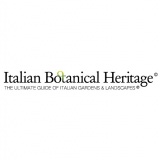
WWF’s Oasis of Persano was established in 1980 to protect the artificial lake by the same name, which was created in 1930 thanks to the blocking of the Sele river. It is located in the municipality of Campagna and Serre (Salerno, in Campania), in the upper part of Piana del Sele, at the internal top of the fan-shaped plain opened to the see between the Picentini Mountains and the Alburni Mountains.
It is part of the Foce Sele-Tanagro Natural Reserve and has an extension of about 110 hectares. The Oasis has been recognized as a Wet Area of International Importance and it is known for the presence of otters, symbols of the Oasis and the reason behind its establishment. The Sele basin is one of the last shelters for these animals: in fact, 50% of the Italian population lives in the Persano Oasis and other areas of Campania, Basilicata and Puglia.
It is possible to admire various plant species inside the Oasis and its surrounding area. There are many grassy, tree and shrubby environments, which are the bases of the area’s characteristical biodiversity. The Oasis can be divided in three different environments: the lake, the reeds and hygrophilous wood.
Flora and Fauna
The lake has been colonized by various water plants species such as Potamogeton nodosum, Myriophyllum spicatum and Ceratophyllum demersum, which play an important role in the alimentation of vegetarian, water birds like coots and diving ducks.
The reeds cover a third of the lake’s surface and are primarily composed of Phragmites australis.
The hygrophilous wood is one of the most important in Italy with its black poplars (Populus nigra), black alders (Alnus glutinosa), white willows (Salix alba) and Salix purpurea. In addition, it is possible to admire 13 different orchid species inside the Oasis. Since it is a wet area, the oasis has become a habitat for the avifauna: 184 species have been pointed out and 47 of them have nested in the Oasis or in its immediate surroundings.
There is a visitor center together with a reconstruction of a paleolitic village for educational purposes. Two naturalistic paths start at the center of the oasis and they pass through natural meadows, wide reed areas and hygrophilous woods and lead the visitors to three observatories at the borders of the reed, while one is located in front of an alluvial forest with observation spots.



